Marcelo Bielsa, known for his innovative and intense approach to football, has taken the helm of the Uruguayan national team. This article delves into the tactical intricacies that Bielsa brings to Uruguay, exploring how his unique philosophy influences the team’s formations, player roles, and overall strategy on the field. From high pressing to fluid attacking movements, we will analyze the key elements of Bielsa’s tactics and their impact on Uruguay’s performance. Join us as we unravel the tactical blueprint of Marcelo Bielsa’s Uruguay.
Build-up
Marcelo Bielsa sets his team up in a 1-4-3-3 formation in the build-up, with a back four, one number-six, two number-eights, and a front three.
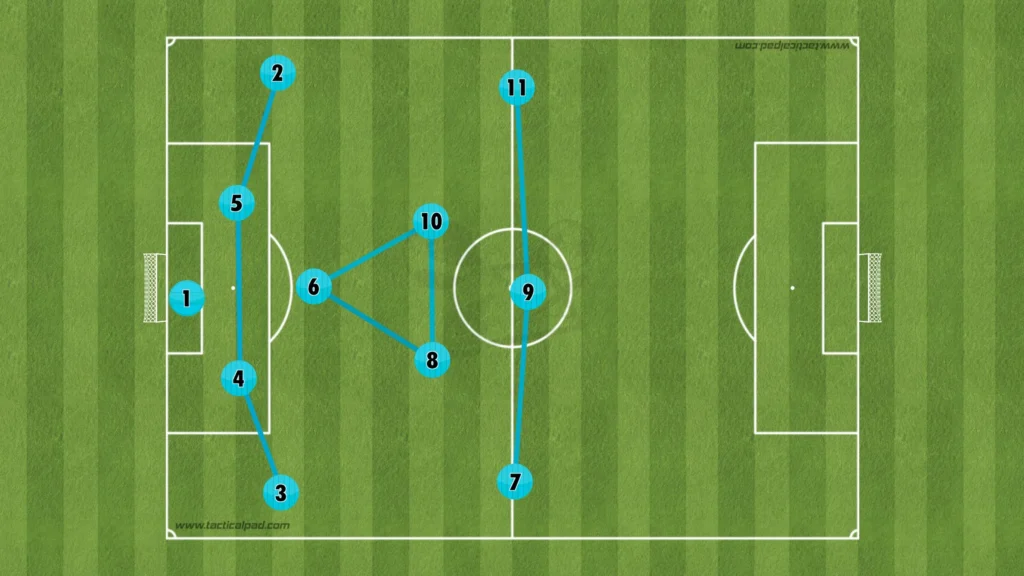
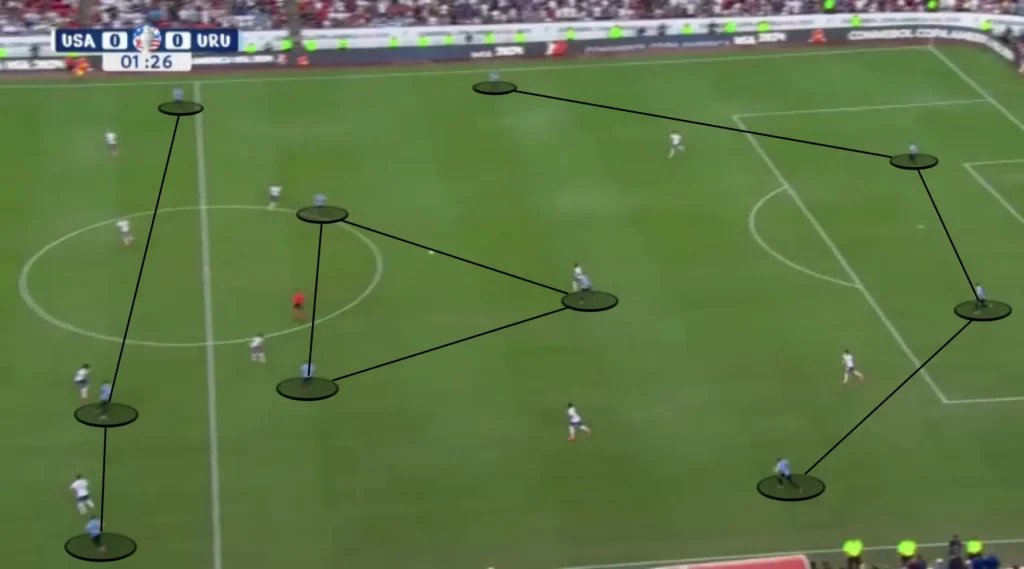
Bielsa wants his three midfielders to always be in different vertical lines. The number-six will be low, one of the number-eights will push up into a number ten position, and the other number-eight will be in between.
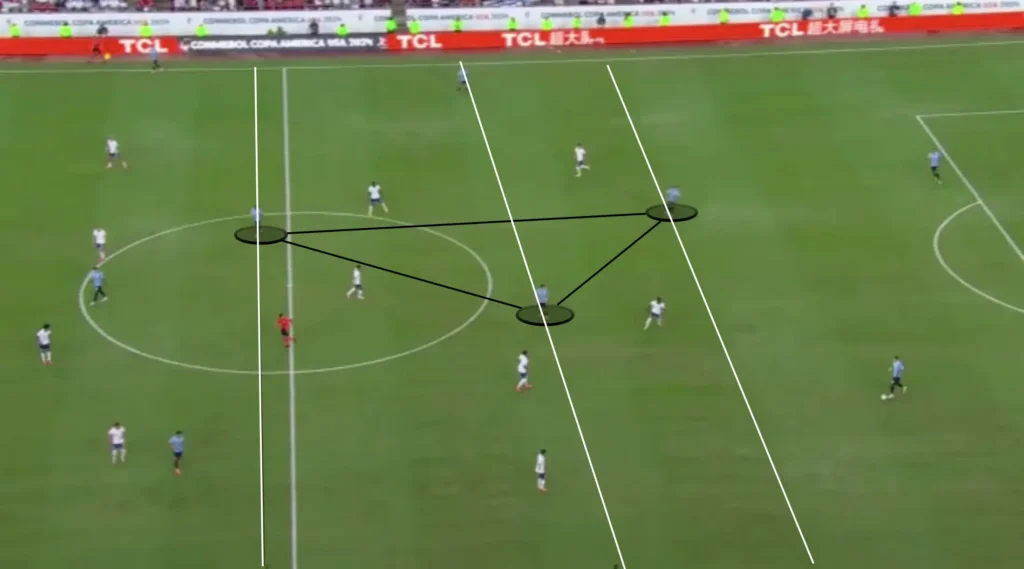
This staggered alignment enhances a team’s ability to create passing lanes and triangles, making it easier to maintain possession and advance the ball upfield. By occupying different vertical lines, midfielders can better exploit space, draw opponents out of position, and facilitate fluid movement and rotation. This setup also aids in defensive transitions, as players are spread out to cover more ground and intercept opposition passes more effectively.
Central Overloads
In the high build-up, Bielsa wants to create overloads in the center. He will invert either the fullbacks or the wingers, giving Uruguay eight players in the middle zone and one on each flank.
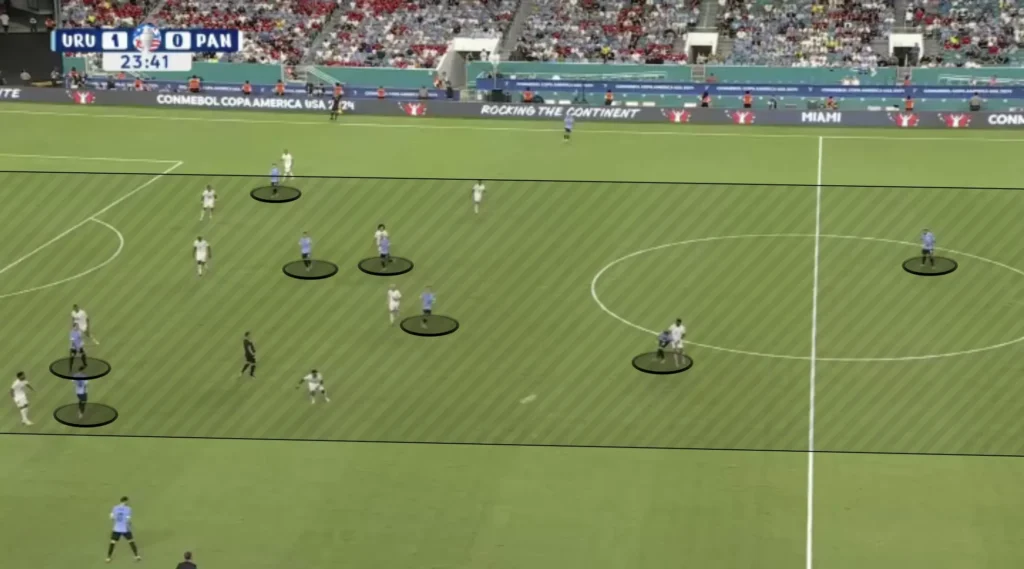
Having only two players out wide and the rest in the middle creates more options in the center and less space between the players. Bielsa likes this because he prioritizes playing through the middle. He needs one player out wide to pull the opposition apart while the rest create numerical advantages in the midfield areas. This builds good conditions in defensive transitions, allowing more players to press when they lose the ball. Another purpose for keeping many players in the middle is to shorten the distance between them. This shortens the length of the passes, which naturally shortens the time between passes. This means the opposition players will have less time to push up and press, giving the Uruguay players more time and control.
Finding the Pockets
Bielsa’s players always try to find the number-eights or the wingers in the pockets. They will be positioned behind the opposition’s midfield and the midfield numerical superiority usually means that at least one will be open. The other attackers will be pinning the opposition backline, not allowing them to push up on the Uruguay player receiving the ball. Bielsa’s team will mainly look for straight passes from the backline, breaking lines and finding these dangerous players who will turn and drive at the defense.
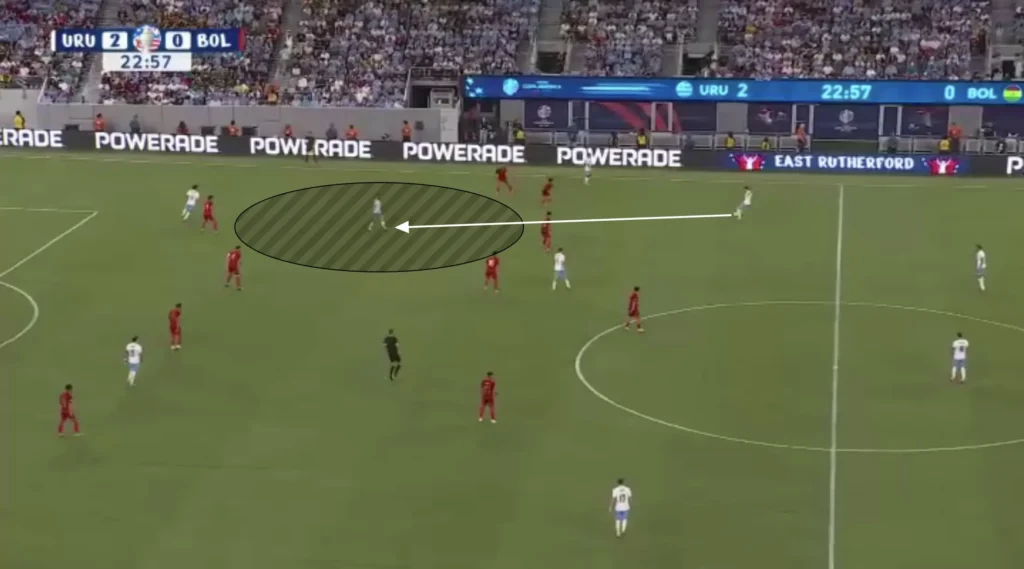
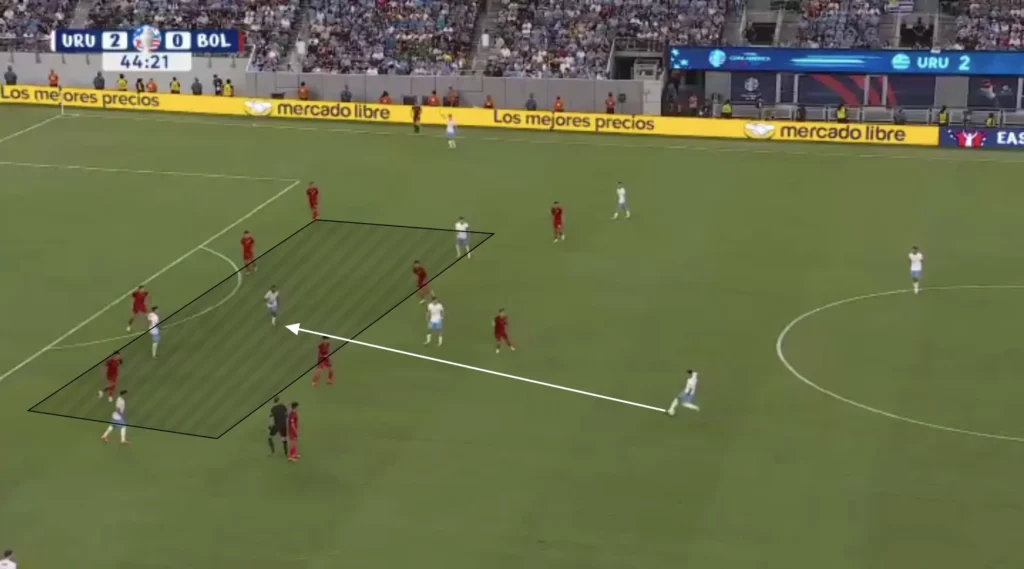
Inverting the Fullback
A recurring pattern in Uruguay’s high build-up is that the ball-side fullback inverts to open the passing lane from the center-back to the winger. When the fullback inverts, the opposition winger follows and covers the run. This allows the center-back to pass the ball to the winger, who can attack the opposition fullback in a 1v1 duel. The inverted fullback’s now central position also allows him to help the winger, offering a one-two or performing an underlapping run.
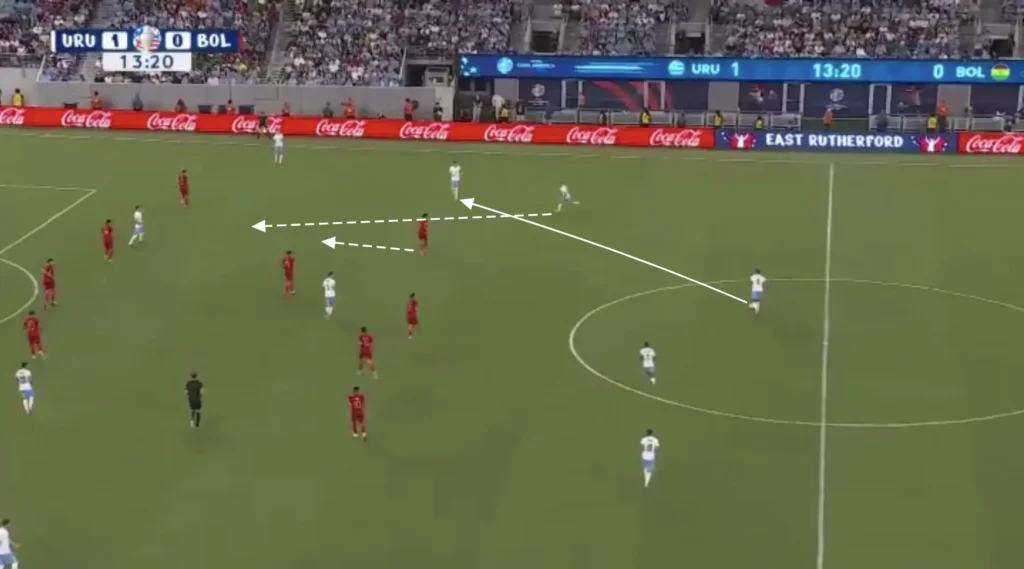
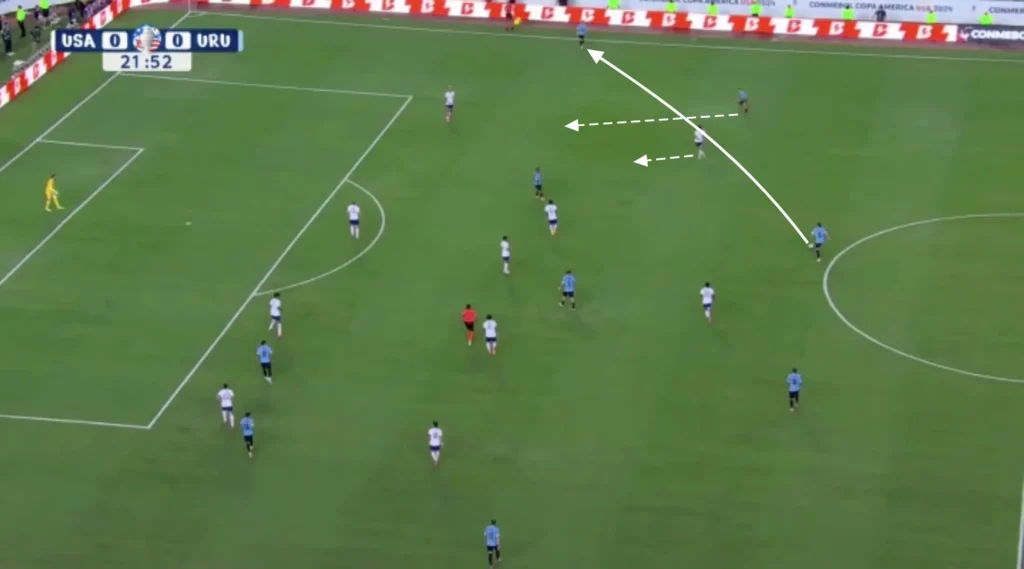
Diagonal Lines
Uruguay look to create diagonal lines between the players during their build-up. They will often be seen in lines of three or four players working together to beat the opposition’s defense.
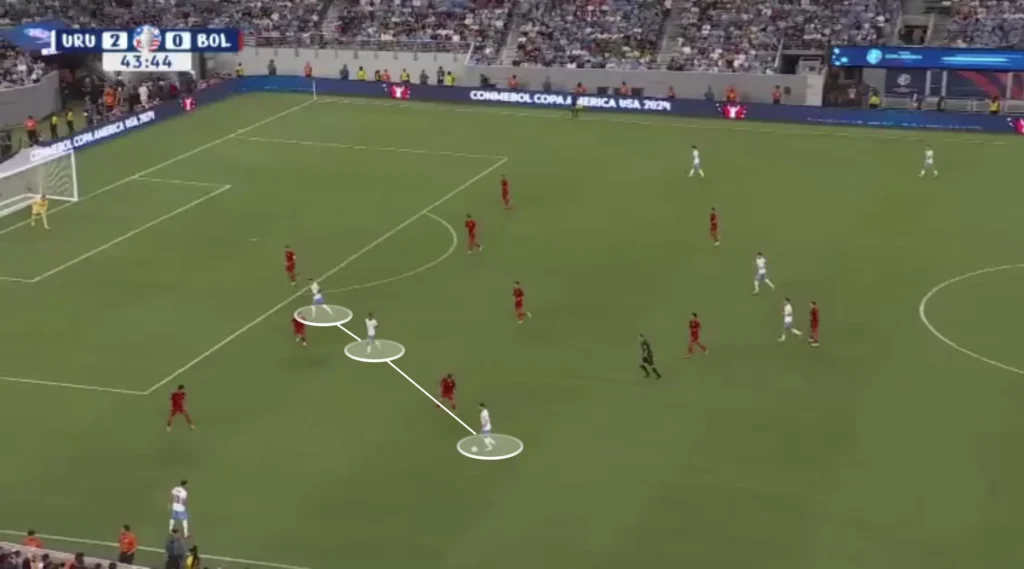
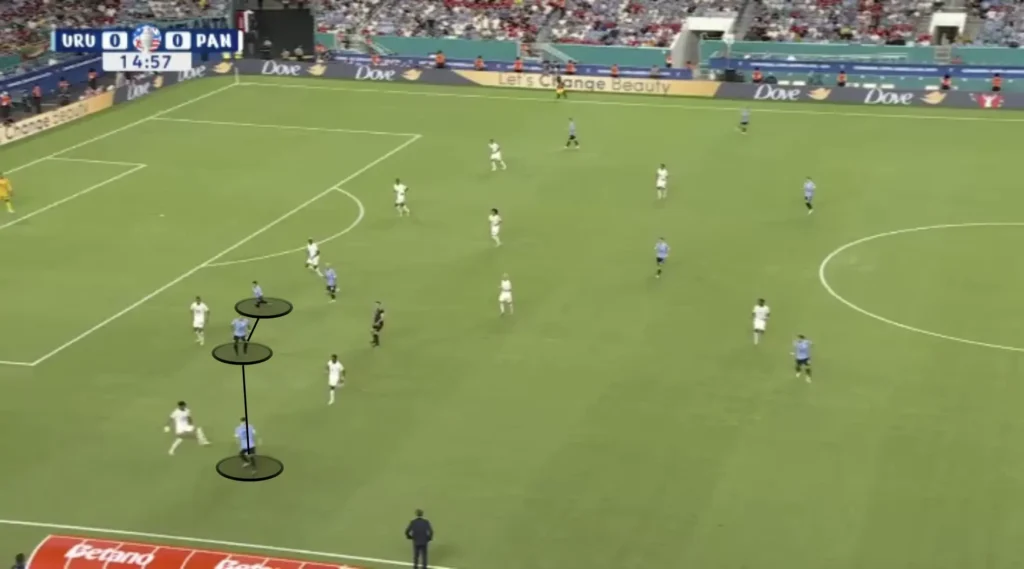
They can exploit these lines in different ways. The “middle player” in the line can open the passing lane to the furthest player by making a run in behind. The furthest player can then play the ball to the running player, whose run is difficult to track. The “middle player” can also jump over the ball to confuse the opponents into not knowing who is receiving the ball.

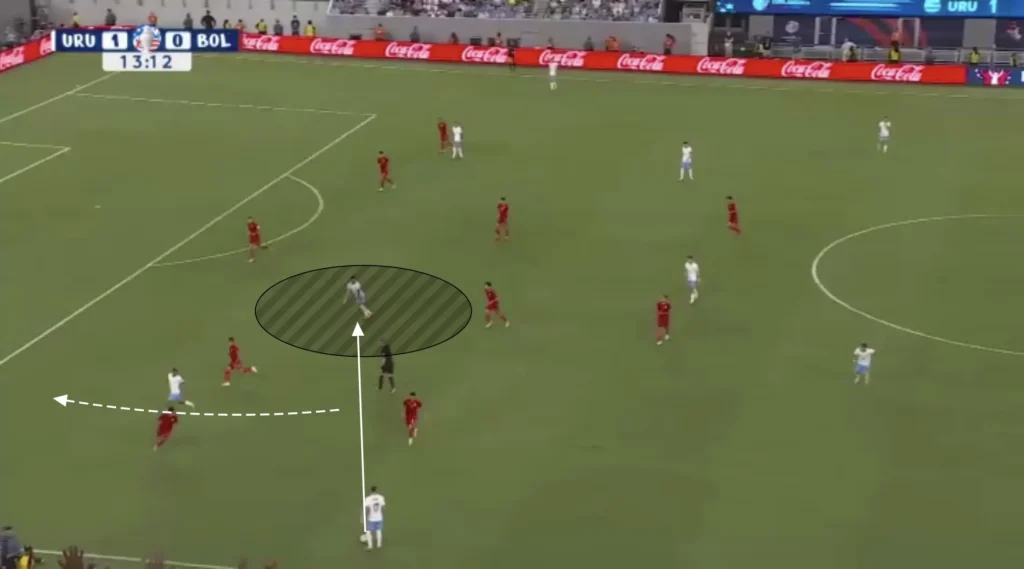
Counter-Movements
Uruguay frequently use counter-movements to create space in the build-up. The two number-eights will, for example, often switch sides with each other. Interchanges like these create unpredictability for the opposing defense, making it harder for them to mark players and anticipate movements. This fluidity can also lead to increased space and passing options as defenders are pulled out of their structured positions.
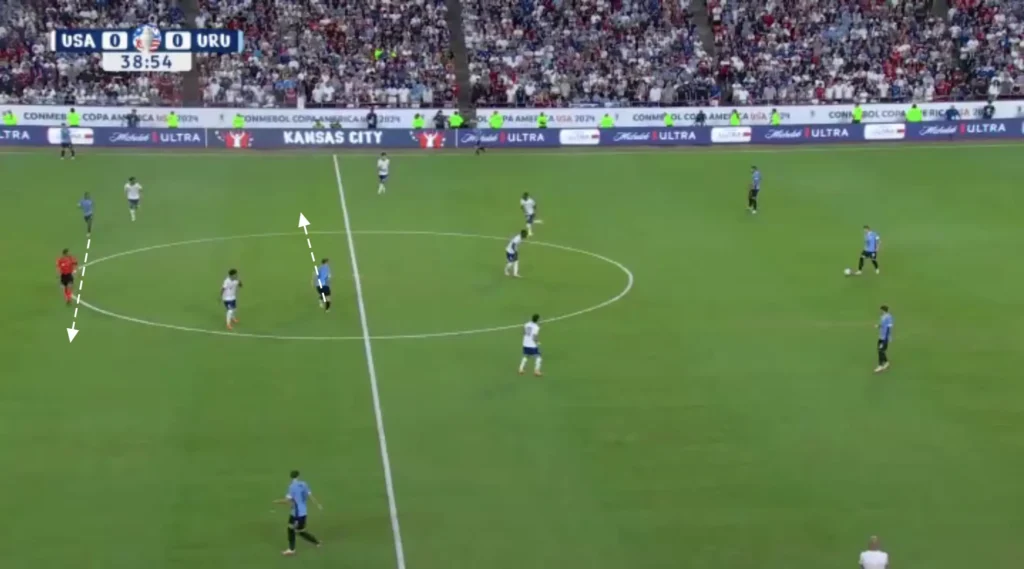
Bielsa’s team often uses a counter-movement between the winger and number-eight as well. When the fullback has the ball, the number-eight will make the run in behind while the winger drops to open the passing lane. This creates a question for the fullback. If he steps out on the winger, the space behind him opens up, allowing the center-back to play a through-ball to the number-eight. However, if he stays inside to cover the run, the ball can be played to the winger, who can turn and attack the defense.
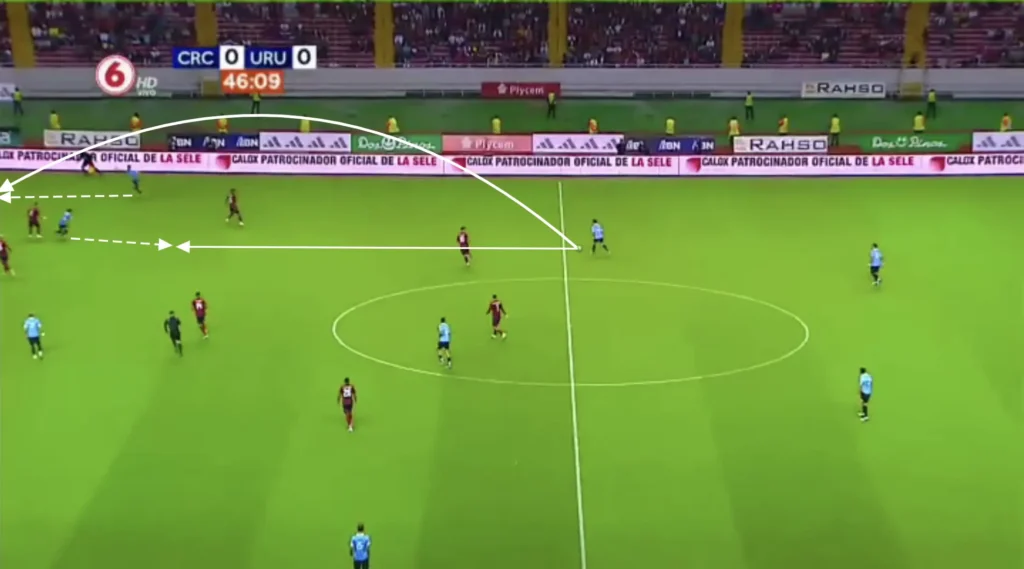
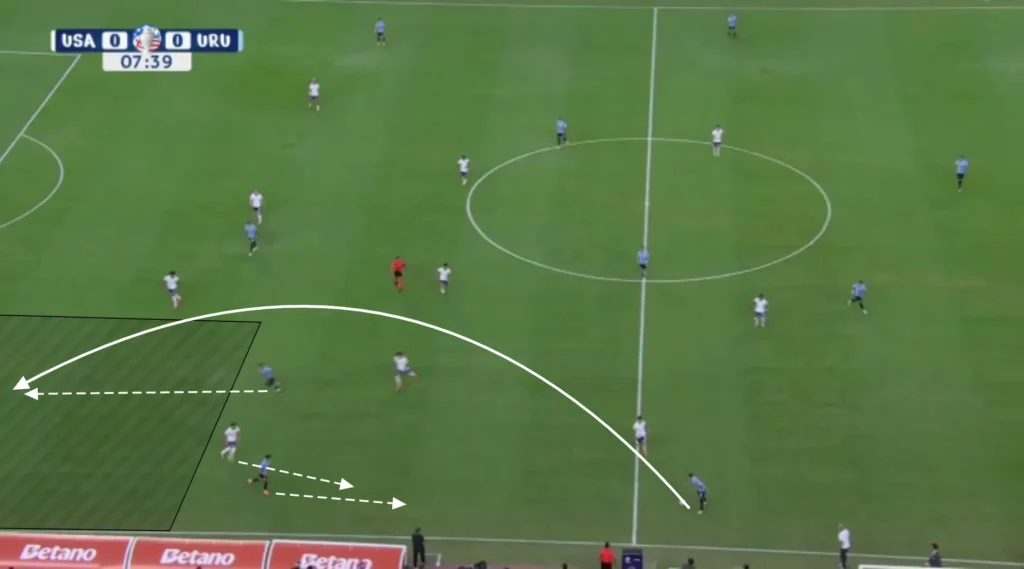
Attacking the Half-Space
Bielsa’s players usually look to create chances by attacking the space between the opposition center-back and fullback. They primarily do this from the wide areas with underlaps from the number-eights. When the winger receives the ball he will attract the opposition fullback. This opens the space between the fullback and the center-back, which allows the number-eight to make the underlapping run into this space. The ball can be played to the underlapping player, who can cross the ball into the box or attack his defender in a 1v1 situation.
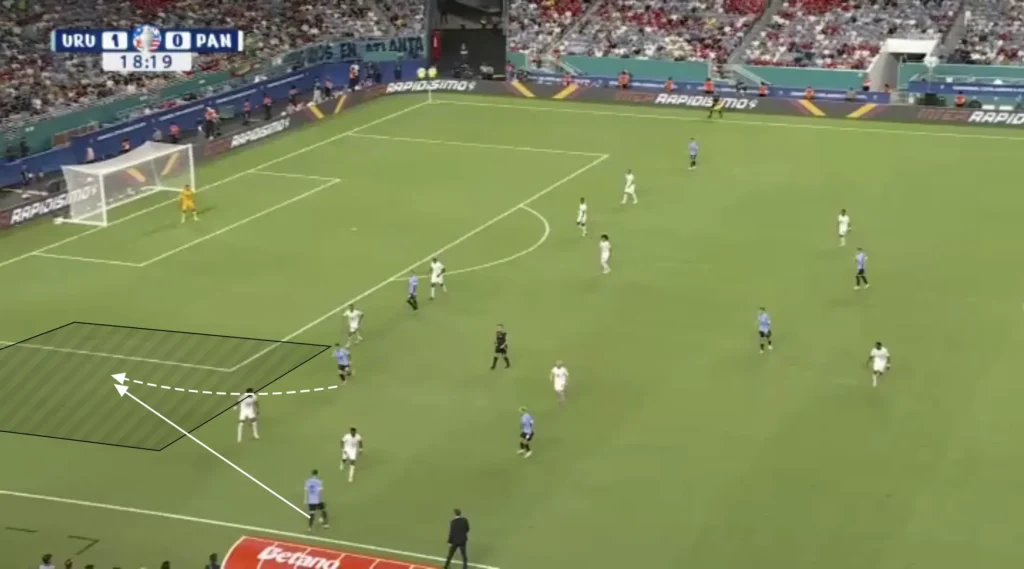
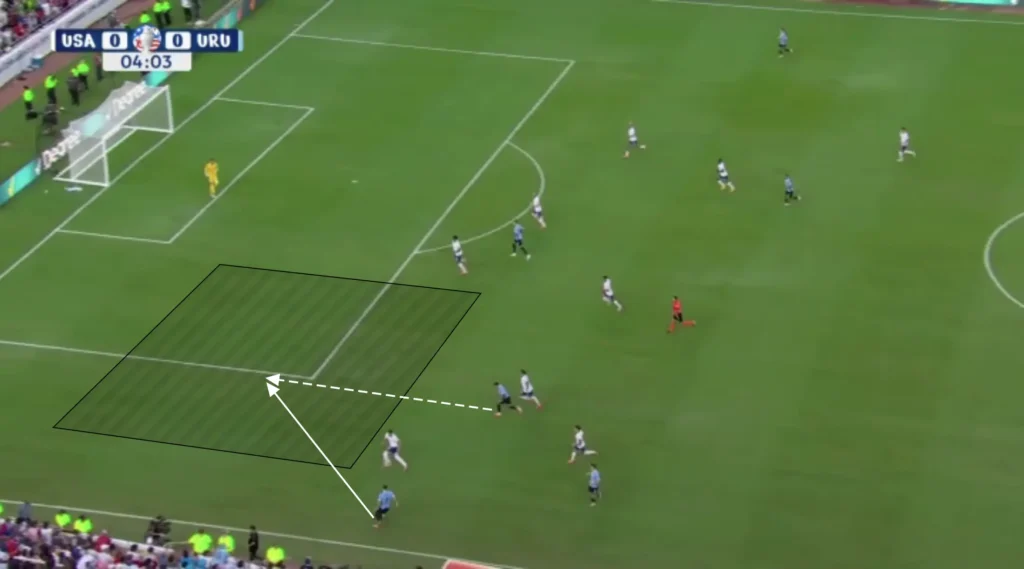
The winger does not have to play the ball to the underlapping player. The run from the number-eight will often drag away an opposition defensive midfielder, which opens the space inside. The winger can take the ball inside and shoot or find a pass to a free player in front of the backline. Here, the space in front of the backline opens up because the defensive midfielder leaves his position to track the underlapping run. The ball is played to the free player, who can shoot and score.
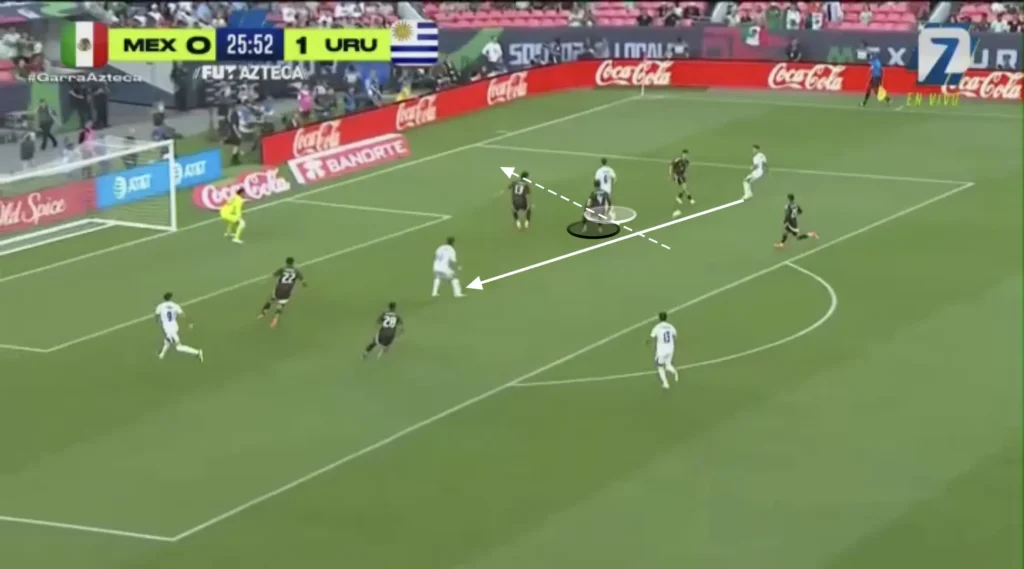
Defending
Man-to-Man
Bielsa’s Uruguay defends in a man-to-man system where they leave one of the opposition center-backs open. The striker is 1v2 against the opposition center-backs, but other than that, everyone has an opposition player they are responsible for marking. The Uruguayan players work extremely hard following their opponents, which makes it difficult for the opposition to find open players.
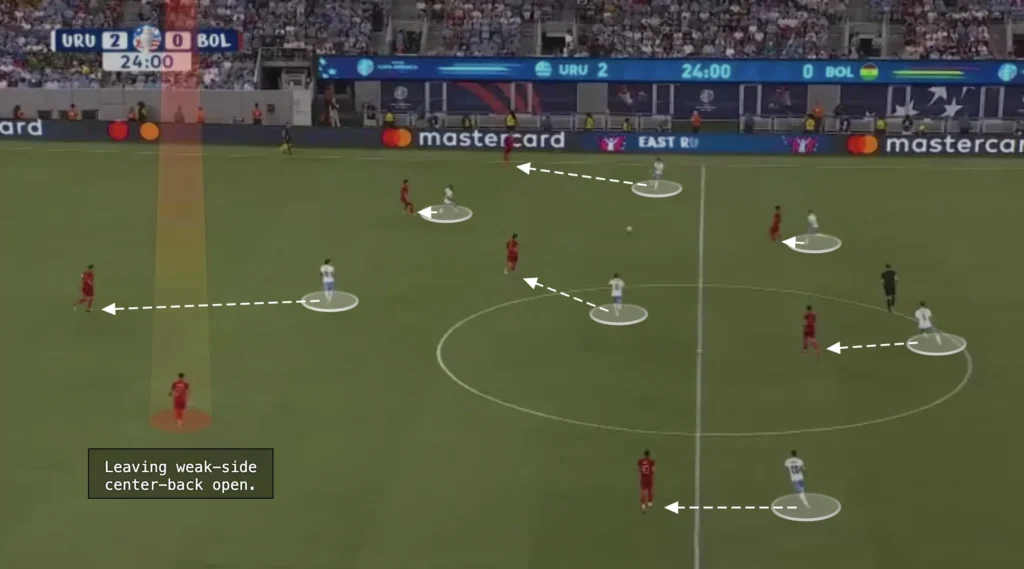
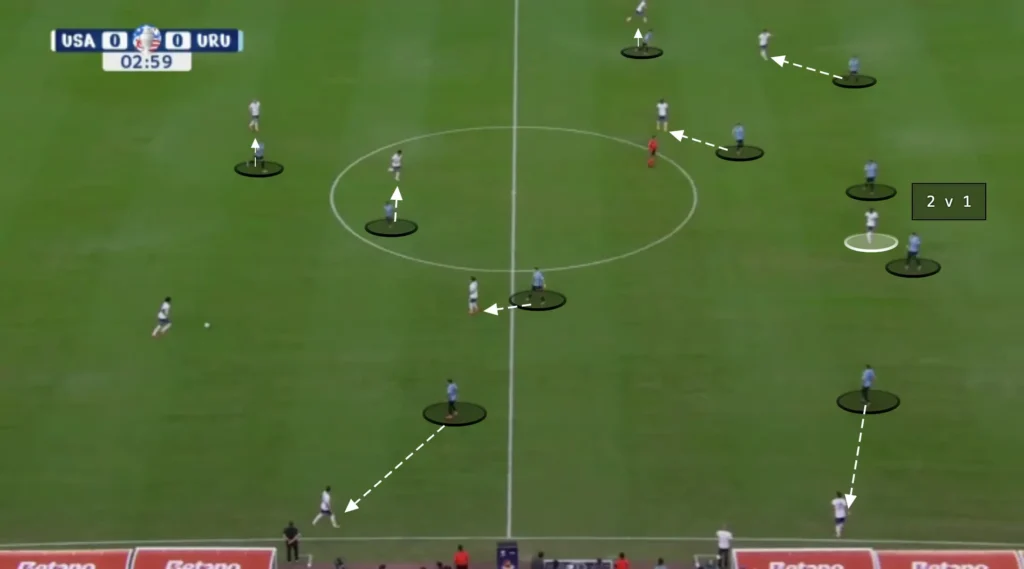
The benefit of this system is that it gives Uruguay a 2v1 numerical advantage against the opposition striker, which gives them excellent control when defending long balls.
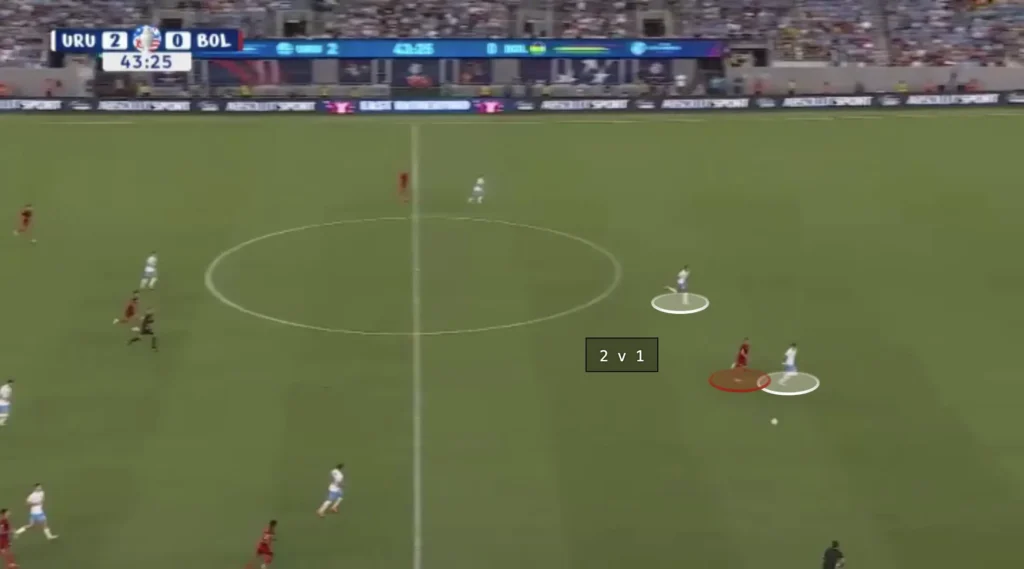
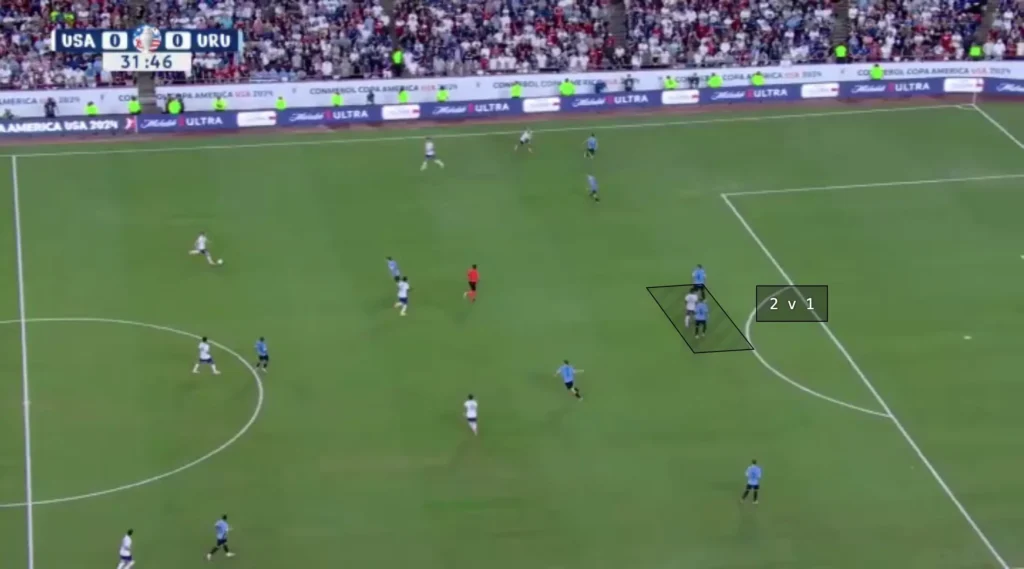
When defending man-to-man, the players must be good at defending 1v1 situations. If they are not and the opposition players win the 1v1 duels to get past their player, another player has to leave their marking, and the entire defensive structure collapses. Uruguay’s defensive setup is one of their greatest attacking threats, scoring many goals from winning the ball high up the pitch.
Distance Marking
In a man-to-man system, it becomes crucial that the players know when to mark the opponent they are responsible for and when not to. If an opponent, for example, is very far from the ball, the Uruguayan player marking him does not need to be as close to him. He can instead come in and help create numerical superiorities in the center, decreasing the risk of dangerous 1v1 situations. The Uruguayan players will always have an opposition player they are responsible for, however, they will never be closer to them than they need to be.
Here, the Uruguay players on the other side from where the ball is have come in, creating numerical superiorities in the midfield. However, they are between them and the Uruguay goal, which means their opponents are not posing any immediate threats if they get the ball. Additionally, they are close enough to their opponent to come across and win the ball if it gets played to them.
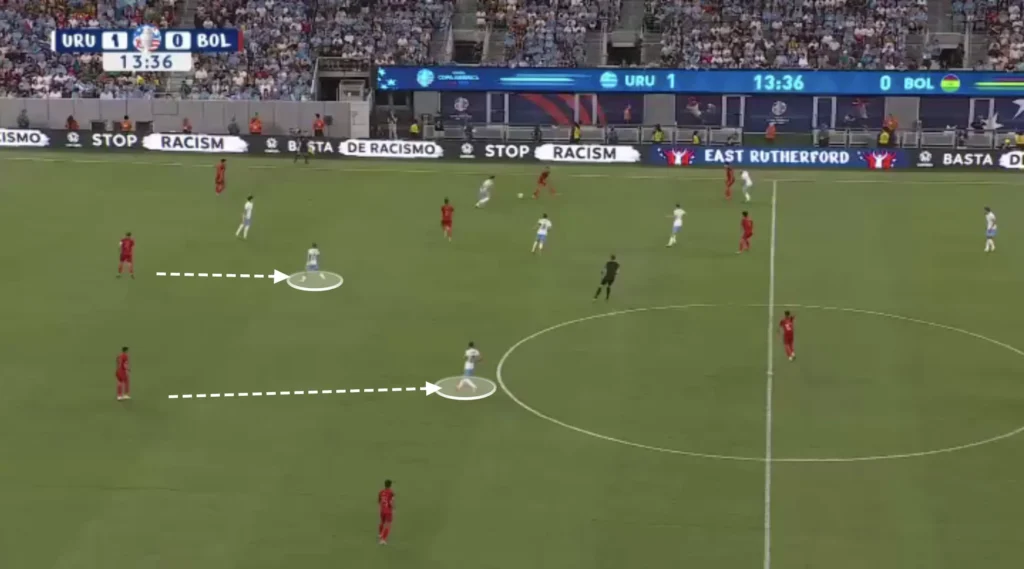
Squeezing the Pitch
Under Bielsa’s guidance, Uruguay have looked to squeeze the pitch when defending. This means constantly pushing the team up as much as possible. Every time the opponent plays a slow, sideways pass or a back pass, the Uruguay player man-marking the opposition player who receives the ball pushes up. When this happens, the rest of the team has to follow to stay compact. When the next pass comes, the next player pushes up, forcing the opponent back even more. They do this because it forces the opponent further from the Uruguayan goal, making it harder to create chances.
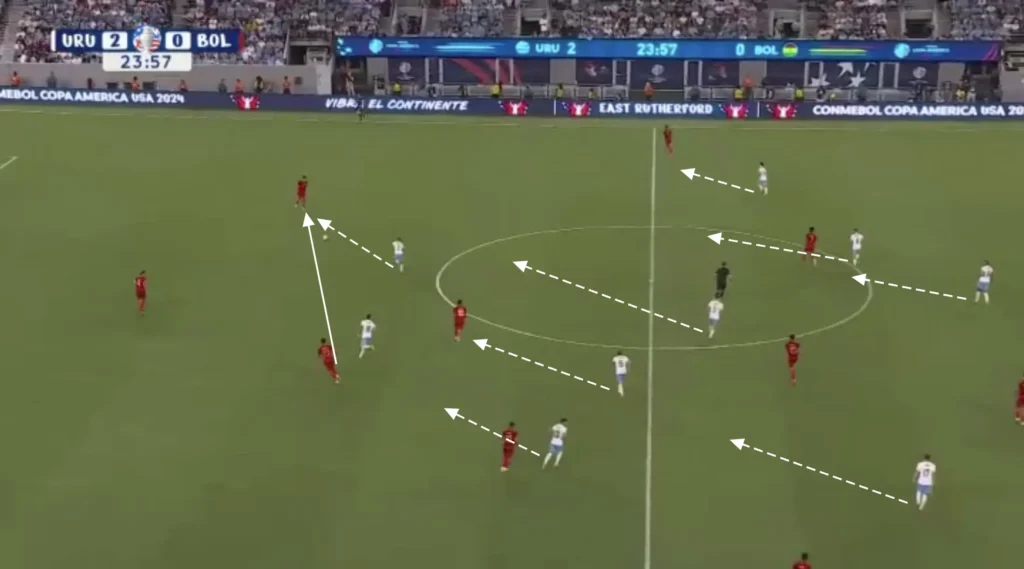
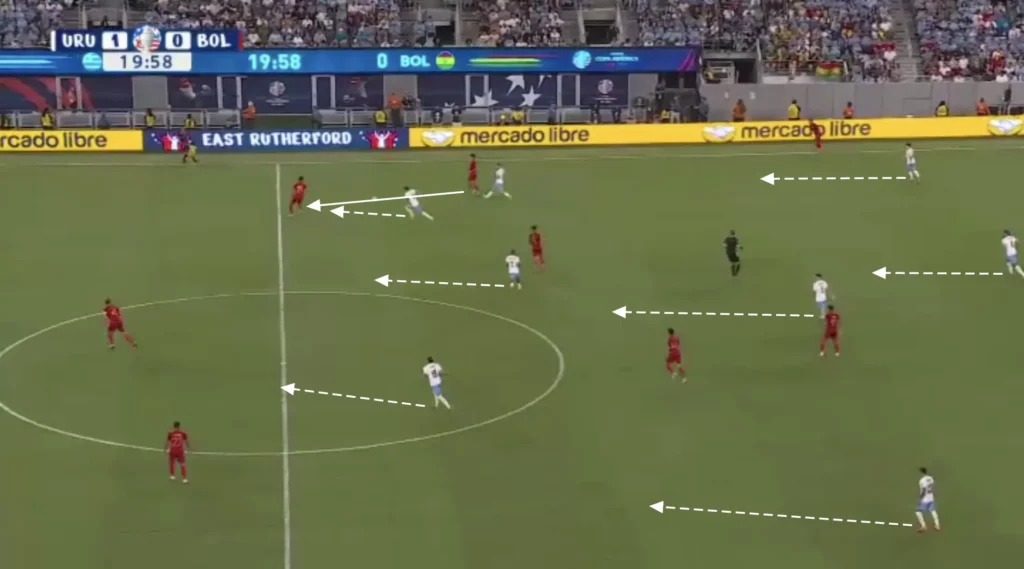
Transitions
Defensive Transitions
Positioning many players centrally, creating a numerical advantage in the midfield, creates good conditions in defensive transitions. Many players close to the ball after losing possession means that many players can work towards regaining possession. Bielsa’s players are also very aggressive in the first seconds after losing the ball. The four or five players closest will immediately jump on the opposition player with the ball and close the distance to cut off any passing lanes. This approach disrupts the opponent’s transition from defense to attack, forcing errors and creating opportunities to regain control in dangerous areas.
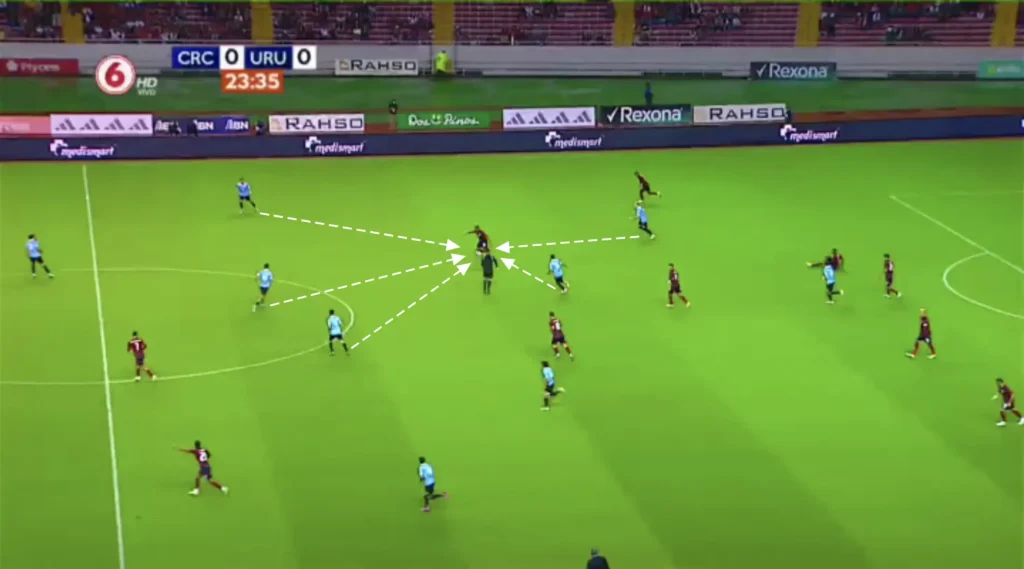

Bielsa’s counterpressing requires exceptional fitness, tactical discipline, and teamwork, making it a hallmark of his dynamic and aggressive style of play.
Offensive Transitions
Marcelo Bielsa’s counterattacks are a hallmark of his dynamic and high-intensity style of play. Bielsa emphasizes quick transitions from defense to attack, often catching opponents off-guard. His teams are well-drilled in pressing high up the pitch, winning the ball back quickly, and then rapidly advancing forward with precise and direct passes. This aggressive approach relies on the players’ speed, stamina, and tactical awareness to exploit the spaces left by opponents, creating numerous goal-scoring opportunities. Bielsa’s counterattacks are not just about speed but also about intelligent positioning and movement, ensuring that his teams can transition fluidly and effectively from defense to a threatening offensive stance. Additionally, due to the man-to-man system, they have many players high up when defending, which enables them to incorporate more players into the counterattacks.
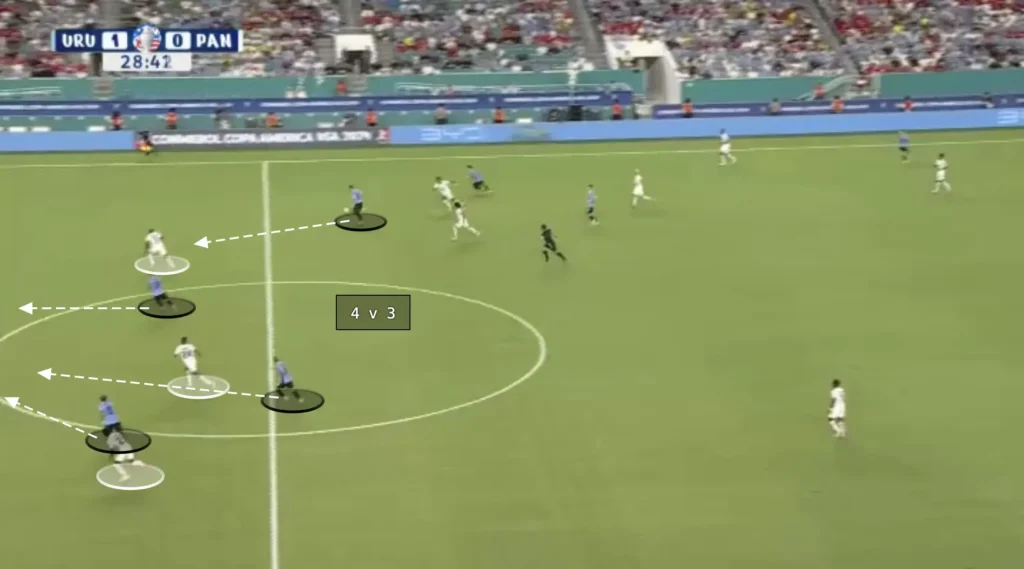
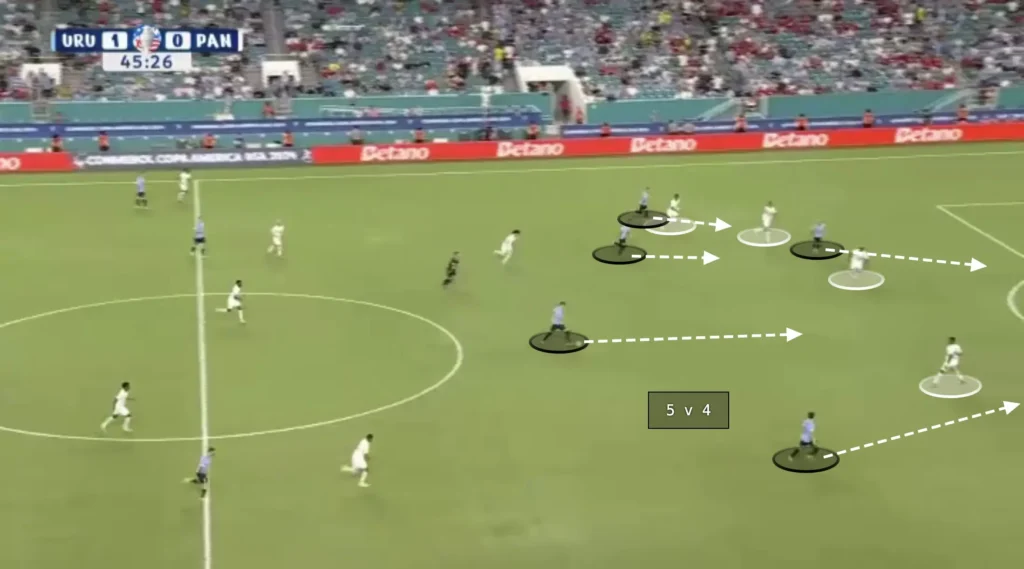
Final Thoughts
In conclusion, Marcelo Bielsa’s tactical approach with the Uruguay national team underscores his reputation as a master tactician. His emphasis on high-intensity pressing, fluid formations, and innovative player roles has transformed Uruguay’s playing style. Bielsa’s strategies enhance the team’s defensive solidity and unleash their attacking potential, making them a formidable force on the pitch.
Under Bielsa’s guidance, Uruguay demonstrates a blend of traditional grit and modern dynamism, reflecting the unique tactical insights of their manager. The team’s ability to adapt and execute Bielsa’s complex game plans promises an exciting future for Uruguayan football. As this tactical journey unfolds, fans and analysts alike can look forward to witnessing the profound impact of Bielsa’s philosophy on the national team’s success.
